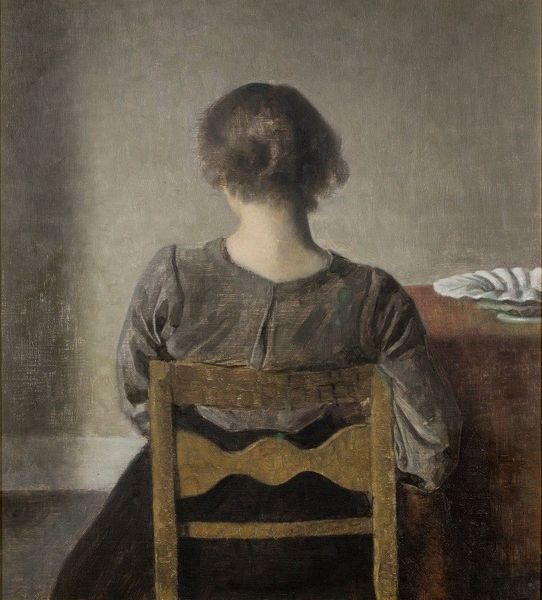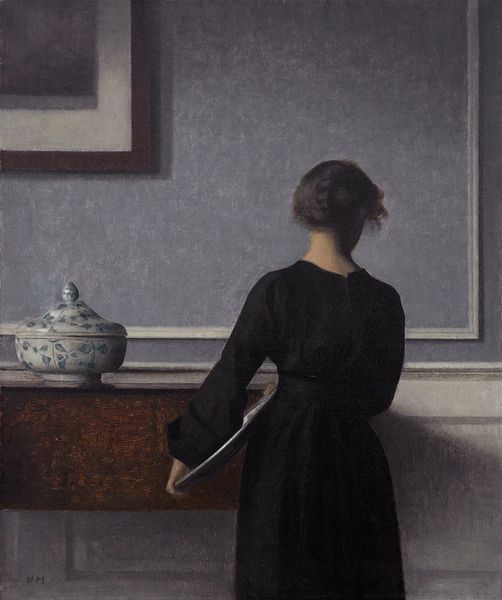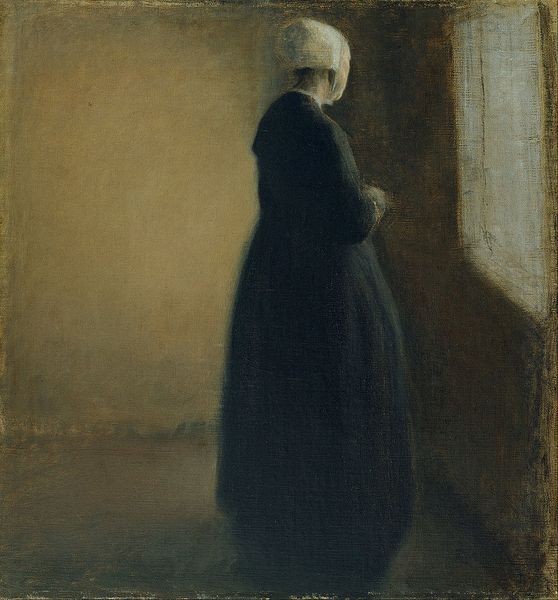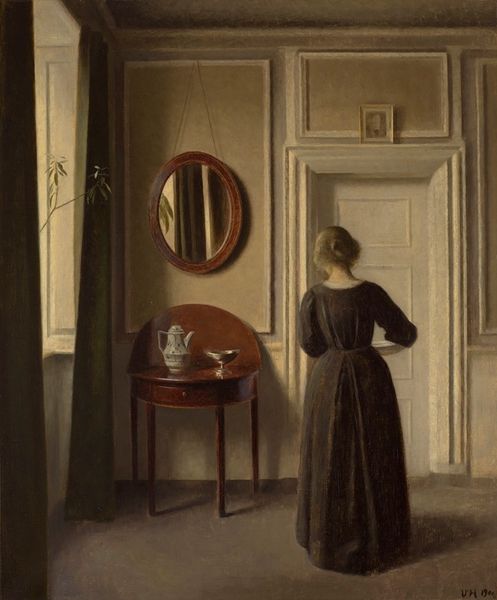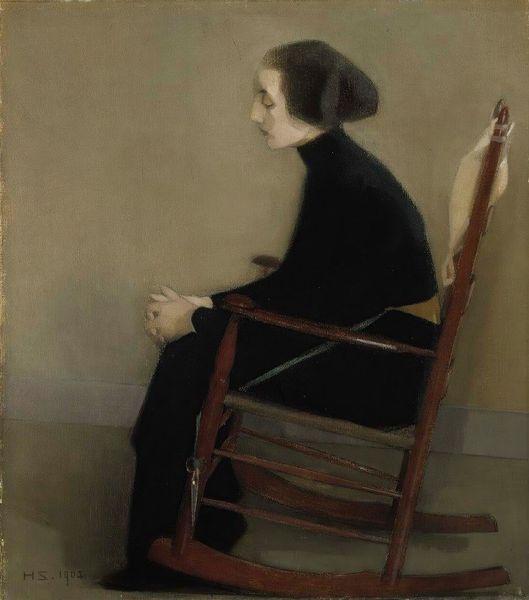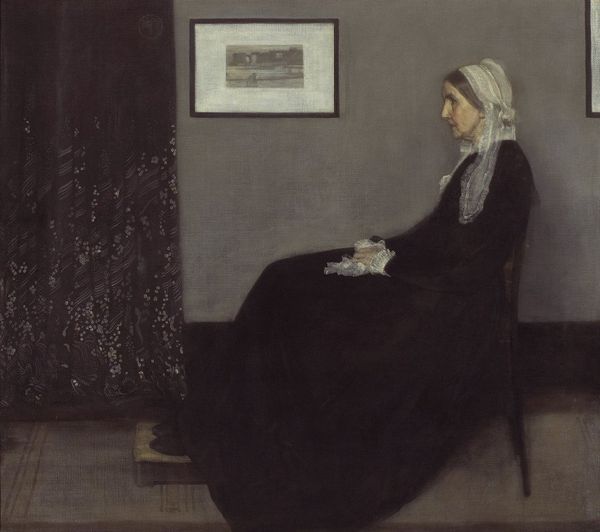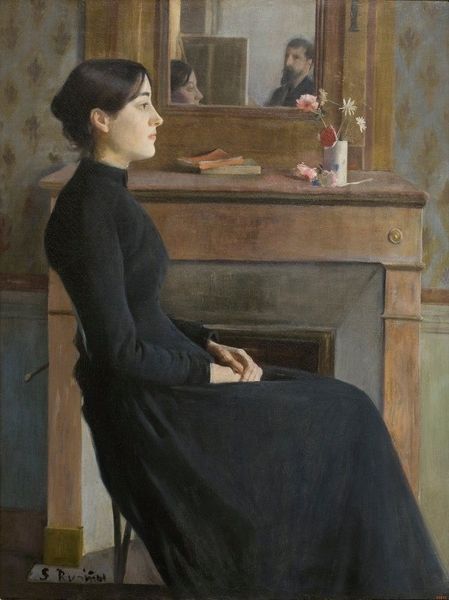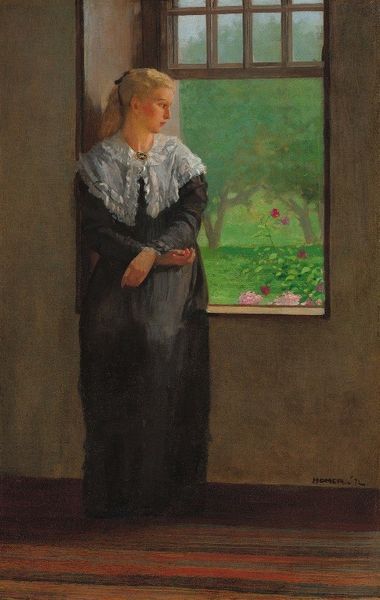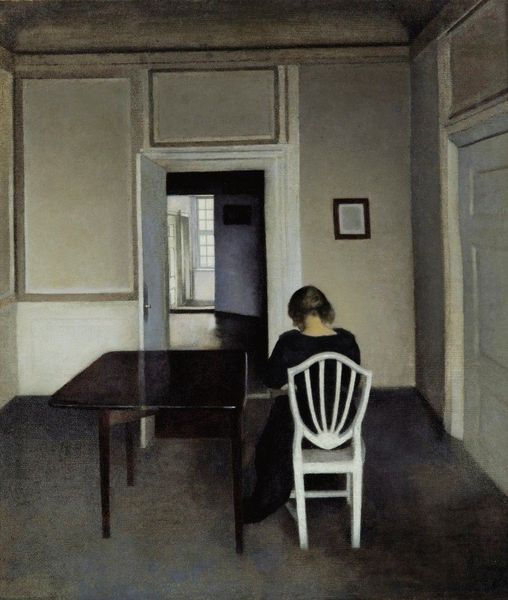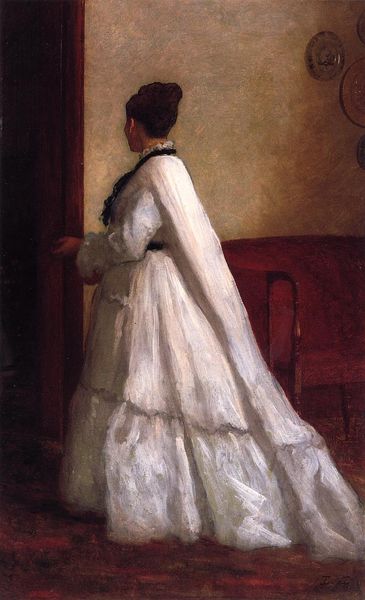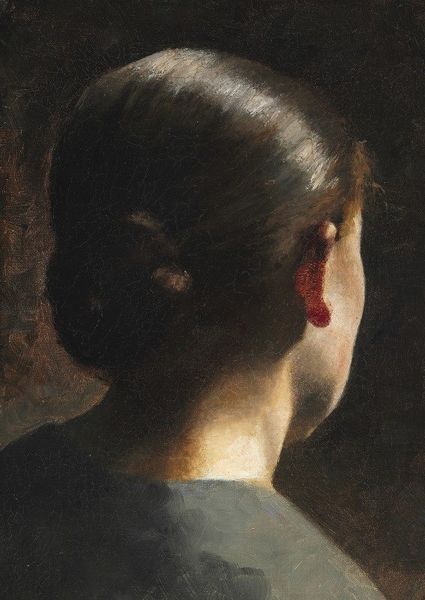
Copyright: Public Domain: Artvee
Curator: Hammershøi's "Woman Seen From The Back," painted in 1888, immediately strikes me as an exercise in quietude. A woman stands with her back to us in what appears to be a sparsely furnished room, an everyday scene rendered with such muted tones, it's like a whispered secret. Editor: Exactly. It makes you want to pause, doesn’t it? The light, the posture, that emptiness! It feels like a visual poem about loneliness, or maybe just deep thought. I see a woman wrapped in her own world, maybe pondering her grocery list, or maybe an existential crisis, who knows? But it draws you in with that enigmatic simplicity. Curator: Right. That perceived simplicity obscures Hammershøi’s deft hand. He situates his models, often his wife Ida, within these spartan, often melancholy domestic spaces to subtly critique societal constraints placed upon women in the late 19th century. Think about it – is the absence of vibrant color here also reflective of her restricted social role? Editor: Hmmm. The artist places such importance on negative space, or, maybe on the space, just the feeling itself. The muted color scheme really amplifies that mood. This image gets at that specific moment in between action or reaction. So subtle. Makes you consider how it speaks to interiority versus outward expression, the eternal human push and pull. I find that contrast more compelling than necessarily any societal statement here. But, who knows? I just want to join her in her contemplative moment and think about art making. Curator: Your intuitive approach illuminates how powerfully the image evokes a mood; but let's consider that muted palette as part of a wider, and equally fascinating, socio-political strategy of intimacy that positions his subjects as self-possessed, interior beings in defiance of conventional objectification in art. These interior scenes subtly renegotiate woman's role from the performative to the private. Editor: Point taken! Now that you've reframed it like that, I'm starting to rethink my initial response. It is fascinating how his choice, and maybe even unconscious decisions can radically shift meaning and cultural reception of his art. I'd really want to dive in that liminal place! Curator: Indeed! And what a fascinating conversation the work sparks in us, over a century later. Editor: Absolutely. A quiet, profound moment frozen in time and paint.
Comments
No comments
Be the first to comment and join the conversation on the ultimate creative platform.
